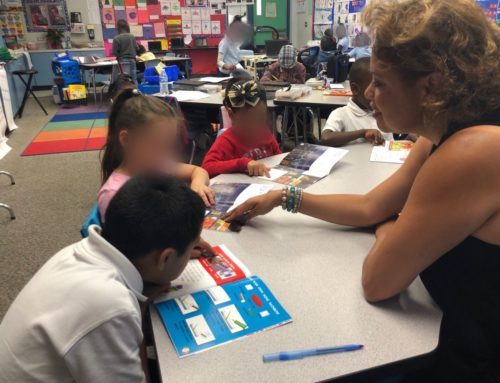One of my goals as an educator is to reach and teach the WHOLE child. I want to do more than just read from a book or just dot information on a white board. I want to reach and teach my students right where they are. My teaching philosophy in this regard is best summed up by a quote from Aristotle : “The habits we form from childhood make no small difference, but rather they make all the difference.” – Aristotle
Because I teach in an area that is primarily disadvantaged and underserved, I understand that my students are faced with distinct challenges that other students in more privileged areas are not. I have students that are living in foster homes, being raised by single parents, or living at or in most cases below the poverty line. I have to take this into account when I enter into that classroom each and every day. There is a reason why Student “A” isn’t completing his homework. There is a reason why Student “B” isn’t reading at the appropriate grade level for his or her age. I have to take these mitigating circumstances into account. Instead of focusing on the “why” of the problem, I need to direct my focus on helping these students the best that I can. The bottom line is : these children will be adults sooner rather than later. If they are to function effectively and properly in society – it is up to me to reach them and help them NOW.
One of the ways I try to reach my students is to have them express themselves. Not only to me, but others as well. One of the projects we engaged in was writing letters and painting pictures that were to be sent to patients at Children’s Hospital of Los Angeles. This allows the students to see that disadvantages come in different forms. And maybe, just maybe by sharing their own individual struggles – they can come to find peace and strength in each other. I made it a point to incorporate cross – curricular teaching (writing, art, reading, social studies, and of course, compassion) into one big lesson. This project really touched and moved my students. I was just so happy that they were so engaged and into the lesson.
One of the standards of the 1st Grade Social Studies Curriculum is to teach the meaning of the Golden Rule : “Treat others the way you want to be treated.” I want my students to understand that their current situation is no fault of their own. It is my job as an educator to do all that I can to help them someday lift themselves and others out of their respective circumstances. That starts with me demonstrating compassion and understanding each and every day that I walk into my classroom.
According to a National Center for Biotechnology Informational Study : Students who acted with compassion during their early childhood years generally tend to perform better academically. That is why cooperation, helping, sharing, and being there for one another is so, so important. Of course, the only way they can develop and convey compassion is if they are shown a good example. That is where educators and role models like myself come into play.


